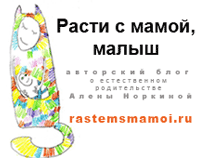Many people are interested in getting into agility dog training - it may be cold outside http://www.belgientrikotwm2018.be/laure … rikot.html , but don't stop your dog from getting the training it needs. Even with an American Pit Bull Terrier, dog agility training is an excellent activity that can be fun for both you and your dog.
Dog agility training may start at an early stage of a dog?s life. You can begin training your dog for this sport as early as puppy stage (around four months old).
Although a fun sport for both you and your dog, agility dog training is also a serious competition that is well organized and has many guidelines and regulations. Most experts recommend not starting agility training until your dog is at least one year old, at least not to enter in a competition before that age.
Most dog owners that are serious about their dog competing in agility competitions will enroll him in a training class - at least to help teach him the basics - then work with the dog on their own to enhance what he has learned. Agility dog training is one of the more advanced types of dog training, but it is certainly quite enjoyable for both you and the dog.
There are all sorts of important things you should know before you consider signing up for agility dog training, but the most important thing to do is before starting agility training ? have your dog examined by a veterinarian carefully.
You can begin to use Buja boards for motion training. Perch training can also be started with young pups. You can teach a variety of skills, drills, and exercises with four jumps.
In a dog agility competition, the obstacles are arranged in various course configurations as deemed suitable by the competition judge. During the agility competition both dog and handler move from each consecutive course to the next, with the difficulty gradually increasing. With patience and practice, your dog could become an agility "nut" and cover the course with a bark of excitement every step. Obstacles like the A-Frame (which is set to 6 feet high), the Dog Walk (two ramps attached to a cross-walk approximately 5 feet high), and the Teeter-totter challenge the dog in balance and fortitude.
You can really be ahead of the pack and have two sets of eight jumps.
Remember, during the cold winter months - don't give up on your agility dog training!
At some point, 8 in 10 of us will experience back pain and figures from the Health and Safety Executive (HSE) report that poor manual handling is responsible for 30% of all workplace injuries. Manual handling training is not just important for people who do regular heavy lifting, but for anyone who does ANY sort of lifting and carrying – that’s almost everyone. All “manual handling” needs to be done properly. An awkward sideways or sudden movement, regular or repetitive tasks – they could all cause back strain. Your back is a wonderful piece of technology, but also a vulnerable one and it needs to be taken good care of.
Manual handling technique isn’t just learning the correct way to hold yourself; most of it is thinking about what you are going to do before you do it. Always test the weight, always consider the route: are there stairs, doors to be opened, is the lighting sufficient, is there somewhere to put it down? These are all examples; there are many more factors that should be considered.
Five years ago, the HSE launched “Better Backs”; a major initiative which they hoped would encourage more people to undertake manual handling training and thus reduce the number of back injuries sustained in the workplace. While the number of such injuries has been reduced, poor manual handling remains a serious issue.
Those working in certain industries are particularly at risk. Recycling, land transport, sewage and refuse disposal, and furniture, food and beverage production account for the largest number of such injuries. The HSE statistics also break down the manual handling injuries into types, for example over the last five years 25% of injuries were caused when lifting or putting down loads, 16% when pushing or pulling loads and 11% were sprains and strains from body movement.
Good manual handling training should include good explanations of ALL factors which need to be taken into consideration when preparing for a lift and should clearly show how to lift properly. Explaining how the back works gives great background and clarifies what exactly is happening when the back is mistreated and makes SENSE of the training. Using various forms of communication (e.g. video, animation, illustration, engaging language) holds the attention and ensures better retention of knowledge. Regular interactivity ensures knowledge is more likely to be retained.
A toddler picking up a box from the floor will almost invariably use naturally good manual handling technique – bending at the knees rather than from the back – perhaps because their centre of gravity is low, but for whatever reason over the years that good technique is lost and needs to be re-learnt. Good preparation and learning a few simple steps to lift and carry is a great step in helping to avoid future back pain.
The author works for the Interactive Health and Safety Company, who produce a series of highly regarded Health and Safety training programmes, including one for Manual Handling training.
Manual handling training
Struts are the network of braces and sway bars under the Mercedes-Benz chassis. They support the weight of the Mercedes-Benz and take the brunt of chassis flex. Since cars only have the wheels to prop it up on the ground, the car strut assembly is made up of a rigid steel framework.
During torque transfer when rotational motion from the Mercedes-Benz engine passes to the drive train and on to the wheels, the strut assemb. Cheap Jerseys China Cheap Sports Jerseys Cheap Sports Jerseys Cheap Replica Jerseys Cheap Authentic NFL Jerseys Cheap Wholesale NFL Jerseys Cheap NFL Jerseys Wholesale Cheap NFL Jerseys China Free Shipping Cheap Football Jerseys Cheap NFL Sports Jerseys









